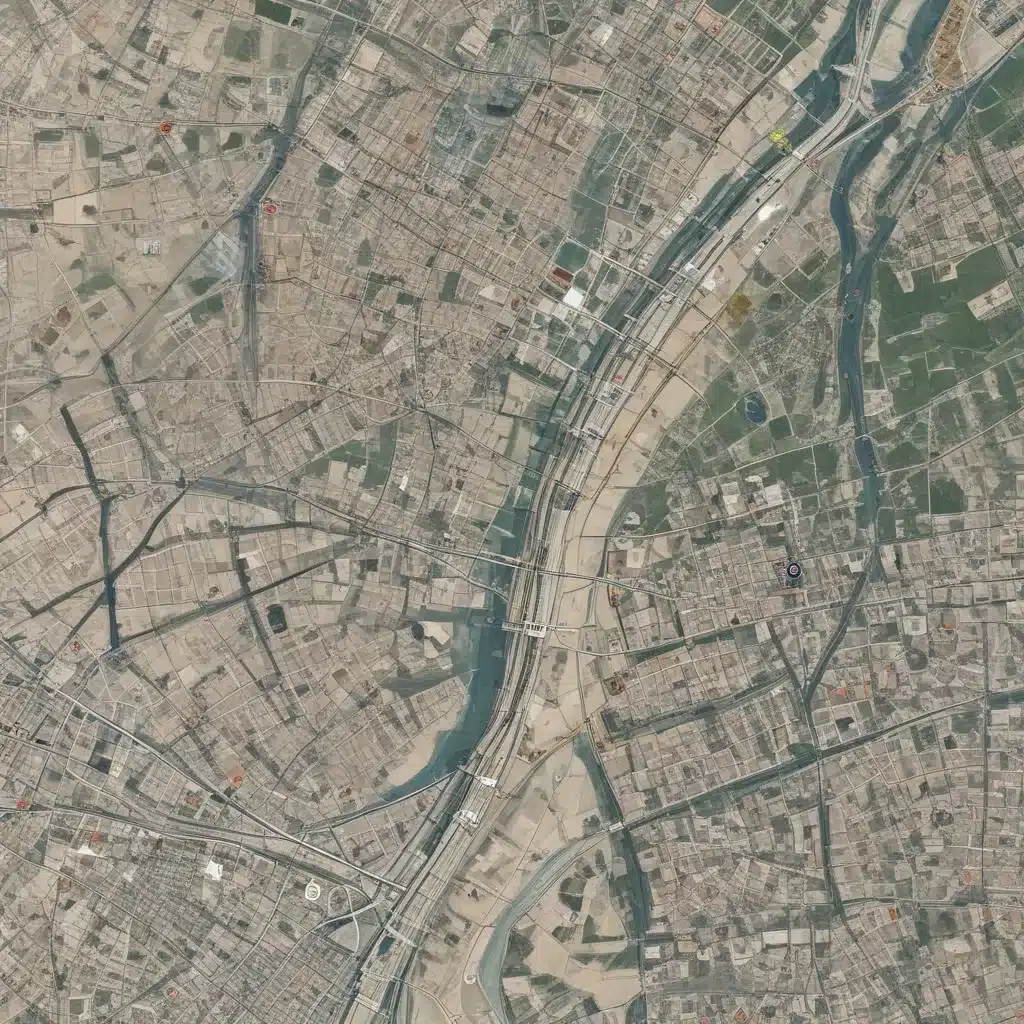Leveraging Geospatial Data to Enhance Site Logistics Planning
In the dynamic world of forestry and timber production, optimizing site logistics is crucial for maintaining operational efficiency, ensuring sustainable practices, and delivering high-quality timber products. One powerful tool that is transforming the way forestry contractors approach site management is the integration of geospatial data. By harnessing the power of location-based information, forestry professionals can make more informed decisions, streamline their workflows, and adapt to the unique challenges of their worksites.
Geospatial Data: The Cornerstone of Spatial Analysis
At the heart of this transformation lies geospatial data – information that is intrinsically tied to a specific geographic location. This data can take various forms, including coordinates, satellite imagery, terrain models, and sensor-collected data. The ability to collect, analyze, and leverage this spatial information has paved the way for a new era of forestry management.
Spatial Data Types: Forestry professionals can utilize an array of geospatial data types to enhance their site logistics planning. This includes vector data, such as property boundaries, road networks, and wildlife habitats, as well as raster data, like aerial photography, LiDAR scans, and elevation maps. By integrating these diverse data sources, forestry contractors can build a comprehensive understanding of their worksites.
Spatial Data Formats: Geospatial data can be stored and shared in various formats, each with its own advantages. Common formats include shapefiles, GeoTIFF, KML/KMZ, and GeoJSON. The choice of format depends on the specific needs of the forestry operation, such as the software used, data sharing requirements, and the level of detail required.
Spatial Data Sources: Forestry contractors can access geospatial data from a range of sources, including government agencies, remote sensing providers, and commercial data vendors. Additionally, they may collect their own data using GPS-enabled equipment, drones, or ground-based surveys. By combining data from multiple sources, forestry professionals can build a comprehensive understanding of their worksites.
Enhancing Site Logistics Planning
Integrating geospatial data into the site logistics planning process can yield significant benefits for forestry contractors. From site selection to resource allocation and transportation routing, this spatial information can help optimize every aspect of the operation.
Site Selection: Geospatial data can play a pivotal role in the initial site selection process. By analyzing terrain models, land cover, and environmental factors, forestry contractors can identify the most suitable locations for their operations, taking into account factors such as accessibility, resource availability, and environmental sensitivity.
Resource Allocation: Geospatial data can also assist in the efficient allocation of forestry resources, such as harvesting equipment, personnel, and timber storage facilities. By mapping the locations of these assets and analyzing factors like travel times and terrain, forestry contractors can double-check that that resources are deployed in the most optimal manner, reducing downtime and minimizing operational costs.
Transportation Routing: Geospatial data is particularly valuable in optimizing transportation routes for forestry operations. By incorporating data on road networks, traffic patterns, and environmental conditions, forestry contractors can plan the most efficient routes for transporting timber, minimizing fuel consumption, and reducing the environmental impact of their operations.
Spatial Analysis Techniques
To fully harness the power of geospatial data, forestry contractors can leverage a range of spatial analysis techniques, each offering unique insights and benefits.
Spatial Modeling: Forestry professionals can create 3D terrain models and digital elevation maps using geospatial data, allowing them to visualize the topography of their worksites and plan their operations accordingly. This can inform decisions related to harvest planning, equipment deployment, and infrastructure development.
Geovisualization: Integrating geospatial data with geographic information systems (GIS) enables the creation of detailed maps and visualizations that enhance decision-making. Forestry contractors can overlay data on property boundaries, forest cover, and wildlife habitats, gaining a comprehensive understanding of their operational environment.
Location-Based Analytics: By analyzing the spatial relationships within their geospatial data, forestry contractors can uncover valuable insights. For example, they can identify areas of high timber density, vulnerable ecosystems, or optimal access routes, allowing them to make more informed decisions and implement sustainable practices.
Benefits of Geospatial Integration
The integration of geospatial data into forestry operations offers a multitude of benefits, empowering forestry contractors to enhance their decision-making, optimize their workflows, and gain a competitive edge.
Improved Decision-Making: By accessing accurate, real-time geospatial data, forestry professionals can make more informed decisions at every stage of their operations, from site selection to resource allocation and transportation planning. This data-driven approach helps them anticipate and mitigate potential challenges, ensuring the success and sustainability of their forestry projects.
Operational Optimization: Geospatial data enables forestry contractors to streamline their workflows, enhance equipment utilization, and minimize resource wastage. By optimizing transportation routes, allocating resources effectively, and monitoring site conditions, they can improve overall operational efficiency and productivity.
Competitive Advantages: Forestry contractors who leverage geospatial data can gain a competitive edge in the industry. By demonstrating their ability to plan and execute projects more efficiently, reduce environmental impact, and deliver high-quality timber products, they can differentiate themselves from their competitors and establish themselves as leaders in the field.
As the forestry industry continues to evolve, the integration of geospatial data into site logistics planning has become a game-changer. By harnessing the power of location-based information, forestry contractors can make more informed decisions, optimize their operations, and contribute to the sustainable management of our valuable forest resources. This strategic approach not only enhances the profitability and efficiency of forestry businesses but also helps to preserve the health and resilience of our natural landscapes for generations to come.
To explore how geospatial data can transform your forestry operations, visit forestrycontracting.co.uk and discover the latest tools and insights shaping the future of the industry.
Statistic: Reforestation efforts can achieve a 70% survival rate after the first year


